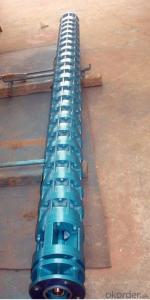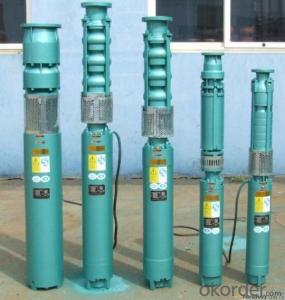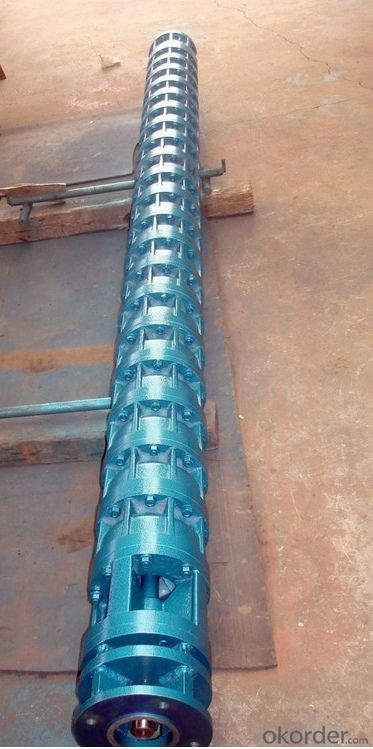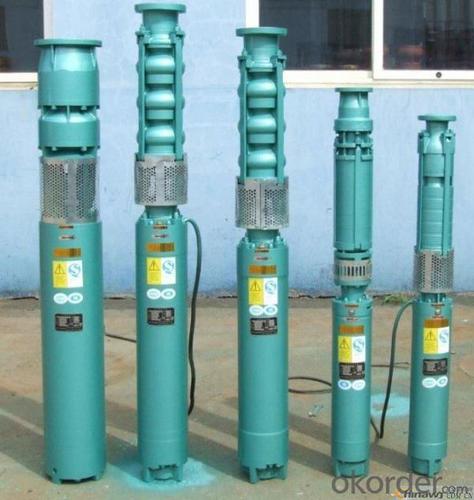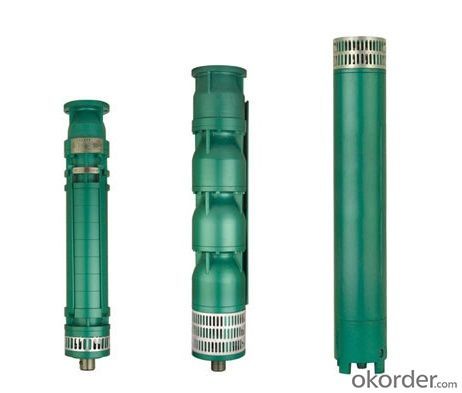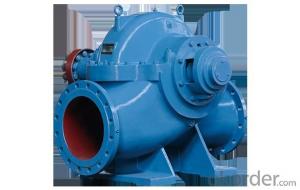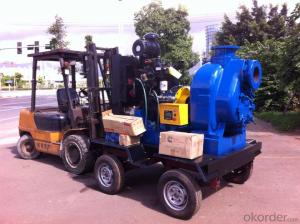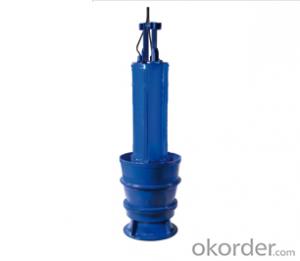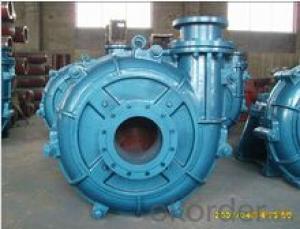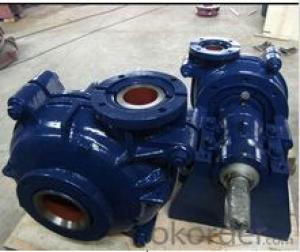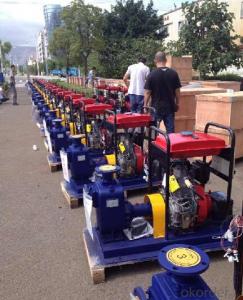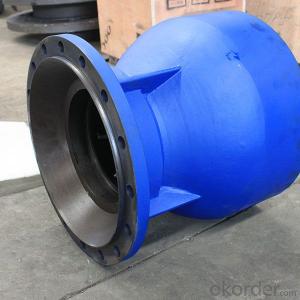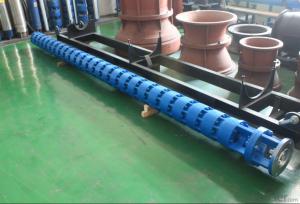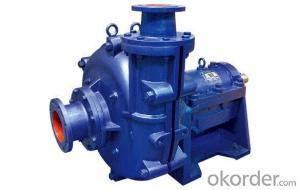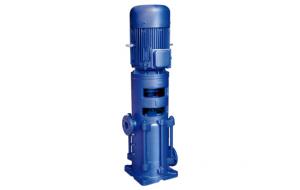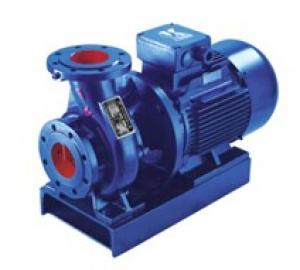QJ Series Designed Deep Well Submersible Water Pumps
- Loading Port:
- Shanghai
- Payment Terms:
- TT OR LC
- Min Order Qty:
- 1 unit
- Supply Capability:
- 2000 unit/month
OKorder Service Pledge
OKorder Financial Service
You Might Also Like
1. Product overview of QJ Series Deep Well Submersible Water Pumps:
QJ series deep well submersible waterpumps are widely used in farm irrigation, sprinkler irrigation, getting water from well, water supply and drainage system for industrial and civil building, water diversion project in hilly and mountain areas water drainage project in at low-lying areas, water supply and drainage in urban and rural's mining enterprisesand various ther kinds of water conservancy facilities. Its features are that the Motor and pump are assembled into a whole, so that it is simple in structure, convenient to assemble and disassemble, easy to use and maintain safe to operate. Otherwise, it covers an small area and does not pollute water.
2. Operation parameters of QJ Series Deep Well Submersible Water Pumps:
(1). Flow range : 10-500 m3/h
(2). Lift range : 10-600m
(3). Applicable well diameter : φ175-φ400mm
(4). Diameter scope:φ32—φ203mm;
(5).Temperature range: -15—100°C.
3. QJ using condition of QJ Series Deep Well Submersible Water Pumps:
(1) 380V voltage deviation is no more than ±5%,frequency is 50HZ, three-phase power deviation is no more than ±1%.
(2) Motor cavity must be filled with water.
(3) The first stage impeller of the pump should be more than 2mm below the moving water surface, pump unit should be less than 70m below the static water level.
(4) The distance from the motor bottom to well bottom must be more than 3m.
(5) Water temperature should be no more than 20°C.
(6) Sand content of the water ( by mass) should be no more than 0.01%.
(7) PH value of water 6.5-8.5.
(8) Hydrogen sulfide content of the water should be no more than 1.5mg/L.
(9). Chloride ion content of the water should be no more than 400mg/L.
(10). Water yield of water source should ensure the requirements of pump continuous working.
4. Material of QJ Series Deep Well Submersible Water Pumps
Impeller: Cast iron HT200,or stainless steel
Pump bowl: Cast iron HT200,or stainless steel,such as ss304 ss3016
Pump shaft : Cold-drawn steel with chrome plating,or stainless steel SS304 SS316
Motor Seal: Rubber O-ring seal,mechanical seal
Motor regulating sleeve: Rubber
5. FAQ of QJ Series Deep Well Submersible Water Pumps
(1) Can your pumps mount Eff.1 motors
Currently, only on request though this will shortly be a CNBM standard.
(2) Are your pumps protected against dry running?
No, unprotected centrifugal pumps are not generally designed for dry running. It is important to give us or your dealer as much information as possible about the system in which the pump is used. Inlet pressure, the type of liquid to be pumped, together with relative density, viscosity and temperature, for example, are required in order to allow CNBM to recommend the right pump with the right gaskets for a long operating lifetime.
(3)How can I get trained on CNBM products?
Yes, we provide training courses in our factory (products, general and specific pump technology, hydraulics, and practical applications). Please consult your sales manager or get in touch with our headquarters for more information.
(4) Are your pumps acid-proofed?
To choose the right pumps for chemical applications, we do need further details on hydraulic operations as well as on the type, concentration and temperature of the liquid.
(5)Can your pumps mount Eff.1 motors
Currently, only on request though this will shortly be a CNBM standard.
(6)Are your pumps protected against dry running?
No, unprotected centrifugal pumps are not generally designed for dry running. It is important to give us or your dealer as much information as possible about the system in which the pump is used. Inlet pressure, the type of liquid to be pumped, together with relative density, viscosity and temperature, for example, are required in order to allow CNBM to recommend the right pump with the right gaskets for a long operating lifetime.

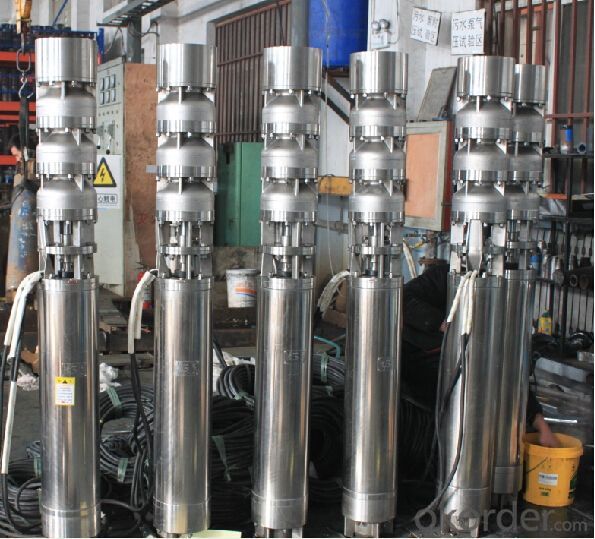
- Q: What are the uses and precautions of magnetic pumps?
- Installation and use of magnetic pumps:1, the magnetic pump should be installed horizontally, should not be erected, the plastic pump body can not bear the weight of the pipeline, for the special requirements of vertical installation occasions, the motor must be facing up;
- Q: What should I pay attention to when buying a pump?
- Four, packing inspection1. with the pump supply documents shall include: product certification, specification, packing list, agricultural pumps (such as submersible pumps, centrifugal pumps, mixed flow pumps, self-priming pump etc.) should be "Three Guarantees certificate", the implementation of the production permit (such as pump submersible pump, high pressure pump, high temperature pump 5 pump) we should have a production license.2. plugging of the orifice, to withstand wind and rain invasion, and should be strong, can withstand accidental damage.3. pumps and all supplied bulk parts supplied with the pump shall have the required identification number and shall be clear.4. pairs of oil lubricated bearings, bearings tank oil should be discharged, and fixed with "need oil filling" warning signs.
- Q: I would like to ask, constant pressure pump set pressure 20Mpa, the actual load is 15Mpa, then the constant pressure pump outlet pressure? If it is 20Mpa, then where is the loss of 5Mpa? If 15Mpa, the constant pressure pump 20Mpa how to understand? In addition, the constant pressure pump pressure is defined when the flow began to reduce the point, or a sharp drop in flow after the point?
- 15MPa. 20MPa means that if you enter the 20MPa, the variable mechanism will work, and the flow at this time automatically matches the load. 20MPa used to supply the fuel by maximum displacement.
- Q: What kind of motor does the hydraulic pump need?
- Calculation of actual oil pump power:First count the flow: Q=dn L / minD displacement / revN RPM / minThen calculate the actual power: N=QP/ (60K) kwQ flow L / minP MPa MPaK total efficiency (usually 0.85)I do not know what the landlord said, 2.5L is the displacement or flow at the end, the concept must not be confused
- Q: What is the pumping property of concrete?
- Pumping capacity means that fresh concrete can be transported by concrete pump, and concrete construction can be carried out with high efficiency. 'pumping' is a qualitative statement
- Q: Working principle and structure of external gear pump
- The principle of the gear pump, gear pump structure consists of two gear mesh together with each other, and composed of pumps known as gear pumps. It relies on the gear teeth meshing space change in volume to transport the liquid, it belongs to the rotary pump, also can be considered as a volume pump. There are many kinds of gear pumps. According to the meshing mode, it can be divided into external gear pump and internal gear pump. According to the tooth shape of gear, it can be divided into positive gear pump, helical gear pump and herringbone gear pump.
- Q: How can I buy a pump?
- 3 、 mechanical requirements of high reliability, low noise, vibration.4, the correct calculation of pump procurement costs, the pump manufacturer to inspect, requiring good quality equipment, good after-sales service, spare parts can be timely supply.The micro pump and the motive of the mechanical energy or other external energy transmitted to the liquid, the liquid energy increase, mainly used to transport liquids including water, oil, alkali liquid, emulsion, suspension emulsion and liquid metal, but also transport liquid, gas mixtures and liquids containing suspended solids.The technical parameters of pump performance include flow, suction, lift, shaft power, water power, efficiency and so on.
- Q: How many pumps does the 80cm tank use?
- Filter pump to select the water per hour can be filtered more than 3 times, I personally feel that this is almost enough. Of course, the more times the better, but also consider that if the pump is too large, the water inside the tank will be too large.128X3=384LThat is, the flow must be more than 384L/H of the water pump.You can buy a bigger pump, because the pump for a long time there will be some attenuation and domestic things in general to sign data, so it should be based on your actual situation to buy. Taobao on this category is about 20~40 yuan.
- Q: What should be used to pay attention to the use of mechanical pumps?
- There are many kinds of pumps, such as centrifugal pumps, piston pumps, diaphragm pumps, vane pumps, gear pumps, etc.
- Q: Direct connection pump What is straight pump and non direct pump? What's the difference in structure?
- Direct connected pump: pump impeller installed directly on the motor shaft, it looks like a whole, relatively compact, simple installation, but the general power is relatively small (big bad processing connection, but not absolute);Non direct pump: pumps and motors are independent of each other, through the coupling torque transmission, the structure is relatively large, complex installation, to adjust the level / concentricity and so on, the general power is relatively large
Send your message to us
QJ Series Designed Deep Well Submersible Water Pumps
- Loading Port:
- Shanghai
- Payment Terms:
- TT OR LC
- Min Order Qty:
- 1 unit
- Supply Capability:
- 2000 unit/month
OKorder Service Pledge
OKorder Financial Service
Similar products
Hot products
Hot Searches
